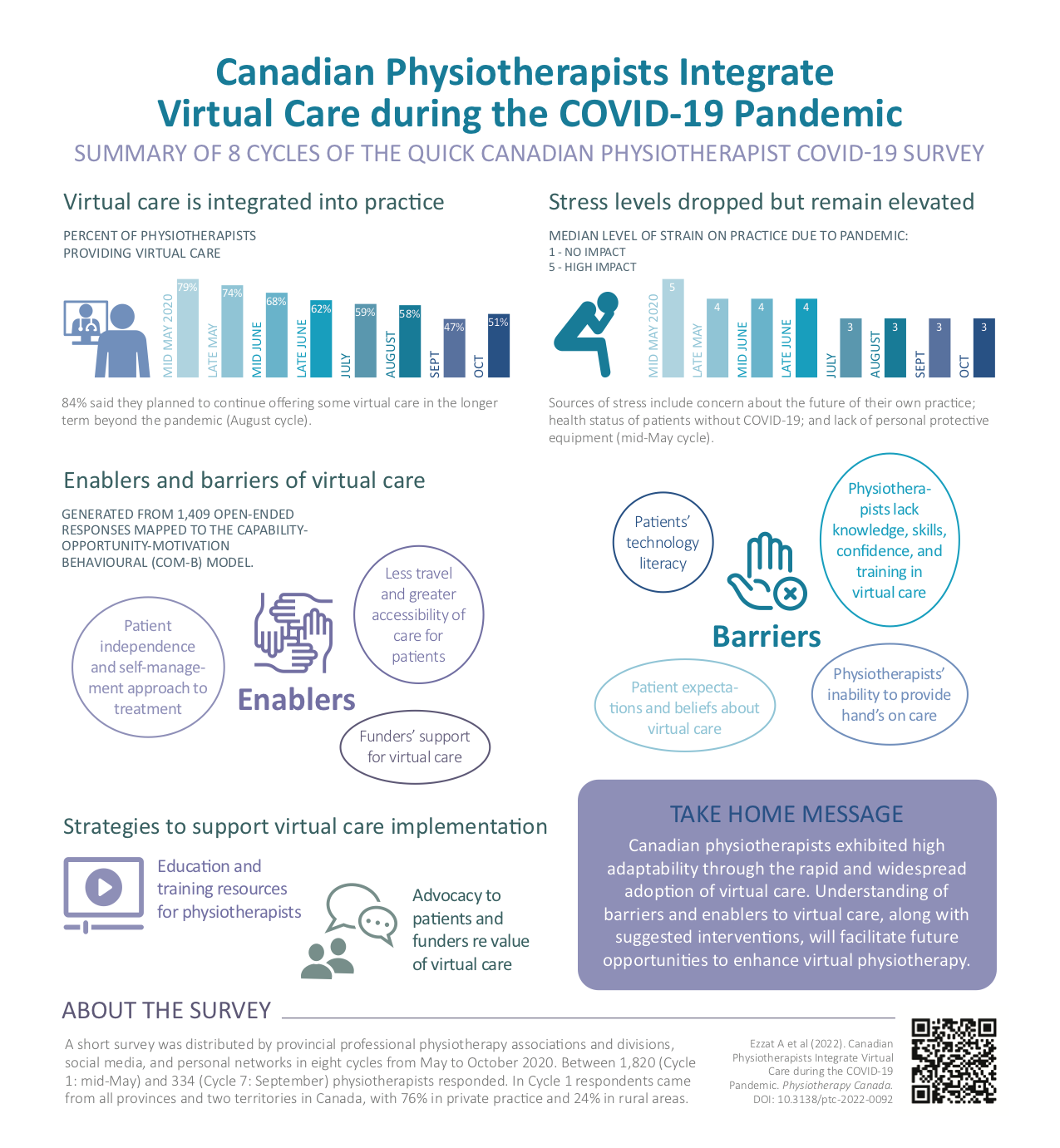Telehealth is a growing area of research, especially with its rapid expansion during the COVID-19 pandemic. Although the field has been around for over 30 years, further high quality studies are needed to grow the evidence base. We have complied some key studies and have provided highlights from them. You can either read the highlight, or click on the underlined link to connect to the research article.
Our latest telehealth research :
General evidence on telehealth:
- Several systematic reviews (here and here) have demonstrated that telehealth can improve pain, physical function, and disability in a comparable manner to in-person care for musculoskeletal conditions such as osteoarthritis, low back pain, and following total joint replacement.
- Telehealth for musculoskeletal pain has good concurrent validity and inter-rater reliability in spine and peripheral joint assessment for many clinical outcomes (e.g. pain, swelling, range of motion, muscle strength, balance, gait and functional assessment).
- Qualitative research has found good acceptability (including overall user experience, adherence, and satisfaction) of telehealth from both patient (here and here) and physiotherapist perspectives.
- Telehealth has been shown to increase patients’ exercise adherence and confidence in undertaking exercise for a variety of musculoskeletal conditions.
- Physiotherapist satisfaction, confidence, and skill at developing rapport with chronic spinal pain patients via telehealth improved over time with more experience.
Evidence on telehealth and specific conditions:
Knee: This systematic review and meta-analysis found that for patients after total knee arthroplasty (TKA) telerehabiltation had comparable pain control and better improved functional recovery compared to face to face rehabilitation.
Hip: In patients with femoroacetabular impingement syndrome (FAIS), a self-administered examination was found to have higher diagnostic accuracy than a traditional examination. Although the difference between exams may not be clinically relevant, this establishes the validity of a self-administered exam.
Shoulder: This study compared a simulated telehealth examination to a traditional clinical examination for rotator cuff tears. It was found to be feasible and not-inferior in diagnostic effectiveness.
Low back pain: This systematic review of 11 studies found that telehealth was superior to controls in improving quality of life and that telehealth and was more effective in improving acute low back pain when combined with usual care than usual care alone. However, telehealth had no effect effect on short or medium term pain or disability compared to controls.

